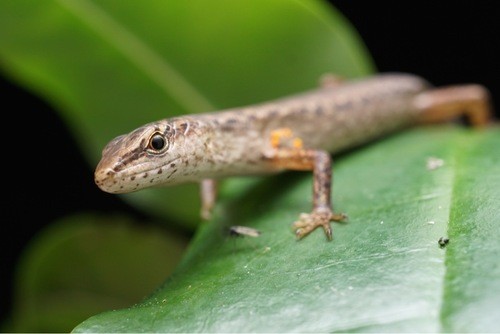Highland forest skink
A species of Shadeskinks Scientific name : Saproscincus rosei Genus : Shadeskinks
Highland forest skink, A species of Shadeskinks
Scientific name: Saproscincus rosei
Genus: Shadeskinks
Content
Description General Info
 Photo By ben_revell , used under ALL RIGHTS RESERVED /Cropped and compressed from original
Photo By ben_revell , used under ALL RIGHTS RESERVED /Cropped and compressed from original Description
Highland forest skink is characterized by remarkably distinct behaviors in its natural environment. Noteworthy is its remarkable burrowing ability, adapted to seek refuge from predators and harsh weather conditions. Nocturnal in nature, it exhibits increased activity under cover of darkness, mainly feeding on small invertebrates. Its role in maintaining biodiversity by predating on invertebrates is crucial in its ecological setting.
General Info
Lifespan
5-10 years
Diet
Highland forest skink, often known as the rosie's shadeskink, is a primarily insectivorous species. Its diet mainly consists of small invertebrates, particularly ants, beetles and spiders, making it a critical element in controlling pest populations.
Appearance
Highland forest skink is a small-sized skink with a slender body and smooth scales. It exhibits a predominant brown coloration, often with orange tinges. The species does not have any distinguishable markings or patterns, and its tail is long and tapering. No significant differences are visible due to age, gender, or subspecies. Its minute size and the lack of unique features make it blend seamlessly into its surroundings.
Behavior
Highland forest skink is a nocturnal, terrestrial skink that displays secretive behavior, often hiding under fallen leaves. It is notably solitary, showing minimal social interaction. Key survival adaptations include effective camouflage and fast movements to evade predators. Highland forest skink doesn't demonstrate any specific territorial behavior.
Population
Stable
Scientific Classification
Phylum
Chordates Class
Reptiles Order
Lizards and snakes Family
Skinks Genus
Shadeskinks Species
Highland forest skink